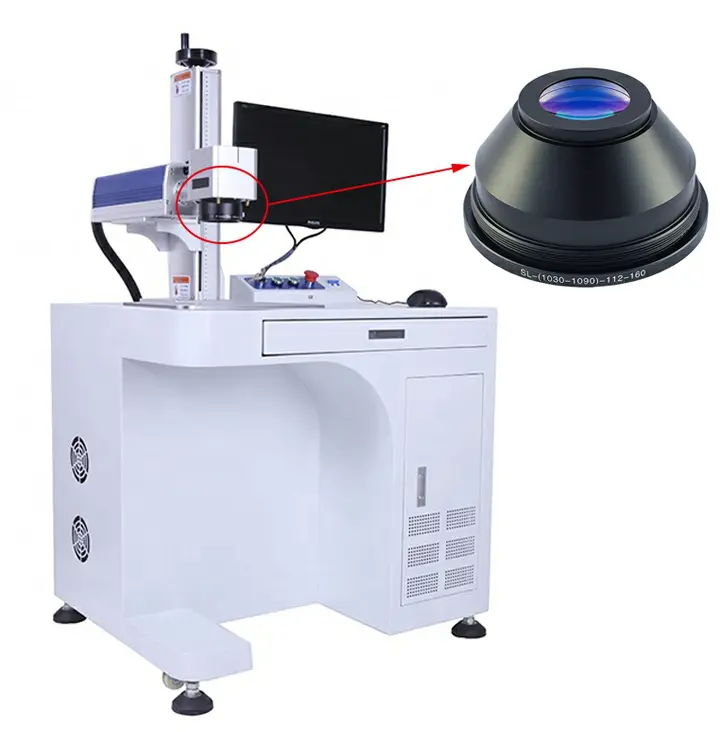All You need Know about F theta lens For Fiber Laser Markers
F-Theta Lens For Fiber Laser Marking Machine
- High light transmittance, high output laser energy
- Marking area is optional from 100mm to 300mm
- High-quality coating, good protection, uniform laser light
- Suitable for a variety of fiber laser marking machines with a laser wavelength of 1064nm
- High quality, not easy to damage
What can F-theta lens do for you?

Know All About F Theta Lens For Fiber Laser Markers
Laser marking has been a popular application of laser processing in recent years. Its features, such as its high speed of marking, its clear writing, its strong anti-counterfeiting feature, and the low pollution, have drawn the attention of many industries. Working close to the focal plane. The lens is also known as an F-theta.
The laser beam will deflect off-axis when it passes through the F-theta lens. The marking surface will show abnormal images, or distortions, compared to an ideal plane. The F theta is a scattering lens that allows the laser to have a fixed focal length. Our lasers usually have a marking range of 100mm x100mm. You can replace the F-theta with a large range lens if you wish to mark more content.
What are the different effects of using different f-theta lenses for the same laser machine?
Because the laser output energy is constant, so when you replace a larger range lens, the output laser energy will be reduced, because the laser energy is scattered, so we usually recommend that customers choose high output power laser marking machines, such as 30W, 50W, 60W, so that it can adapt to a larger marking area F theta lens.
How to Replace the F-theta Lens and What Settings to Do after Replacement?
You can see in the video that it’s very simple to replace the lens. However, there is still a lot to do. After replacing the lens, you will need to adjust both the focal height and the accuracy of marking the area on the laser. Then you will have to adjust the offset for the red light.
How to Choose the Right F- theta Lens for Your Needs?
When selecting an F-theta lens the most important technical parameters are the laser wavelength, incident pupil size, scanning range and focused spot diameter.
Working wavelength : depends primarily on the wavelengths of the laser. The lens is coated at the wavelengths given by the laser. The laser will burn the lens if it is not used within the specified wavelength range. The normal wavelength of a Fiber laser is 1064nm.
Incident Light Pupil : If only one lens is used, then the reflector should be placed at the entrance pupils, and the diameter is the same as the entrance pupils.
Scanning Range (Marking Range) : The greater the scanning range of the field lens, the more it will be used by the users. The scanning range will increase the size of the focus point, but also the degree of distortion. To increase the scanning distance, it is also necessary to increase both the F theta focal length and the working distance. Working distances are longer, and this leads to a loss of laser power.
The focus spot diameter is also proportional to focal length. This means that if you increase the scanning range and then the focus spot size, it is still not fine enough. In addition, the laser power density will decrease very quickly. The F theta is not better if the marking range is larger. You need to select the right lens for your needs.
Focused spot diameter : For a scanning system with incident laser beam diameter D, field lens focal length F and beam quality factor Q, the focused spot diameter d = 13.5QF/D (mm). Therefore, a beam expander can be used to obtain a smaller focused spot.
Related Posts
Photoelectric Sensor Applications
How useful was this post? Click on a star to rate it! Submit Rating As you found this post useful......
Commercial Vehicle Surveillance System
How useful was this post? Click on a star to rate it! Submit Rating As you found this post useful......




